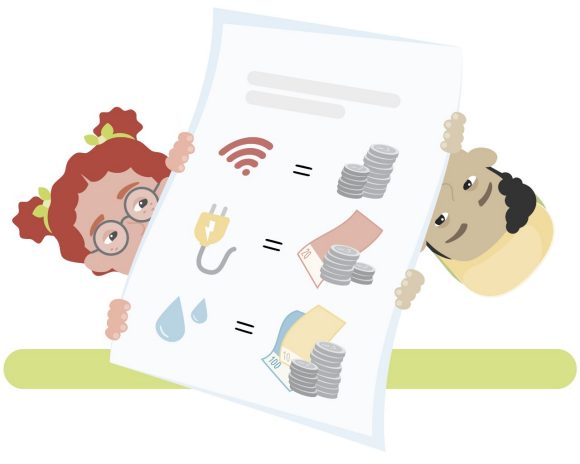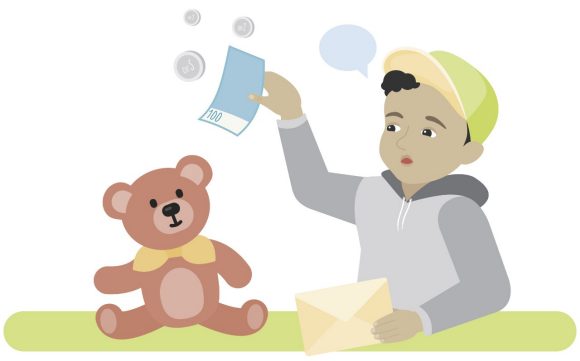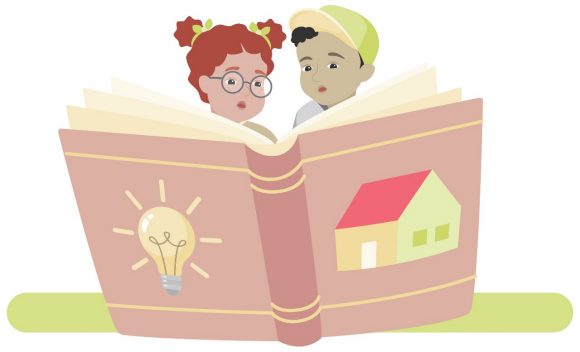Even small children learn that we need to spend money on a lot of things in our daily lives. They see their parents pay at the till or spend their own pocket money later on. In this way, they find out how much different goods cost. But the cost of lighting their bedroom or taking a hot shower is much less obvious. We take a shower today but only see the electricity bill months later – and children often don’t see it at all.
But how much did that hot shower in December cost? Most people have no idea, and we too pay little attention to these costs day-to-day. If we were to receive immediate feedback – how much water and electricity we’ve used and how much it will cost – we’d probably use much less energy and take shorter showers, for example.

An important building block for later
An important building block for later
Not only the costs of electricity and heating are invisible to children – bills for WiFi, library subscriptions, health insurance or radio and television fees are seen by very few children and young people. Knowing roughly what everything costs is an important building block for adult life. Energy prices are not always the same, whereas the price of library membership is fixed for a year. By comparing prices with a previous bill, your child can better understand this.
Opportunities to talk about invisible costs
Opportunities to talk about invisible costs
Going through invisible costs with your children over dinner is probably not a good idea and won’t grab their attention. Ideally divide them into “snacks” and link them to concrete situations. For example: instead of parents simply renewing the child’s library card, they could discuss at the dinner table whether they would like to renew the card for the coming year. It is also interesting to calculate what the card costs per week and how many books have to be borrowed to make it worthwhile.

If a tradesman needs to read the electricity meter or fill the heating oil tank, these are other good opportunities to take a closer look at an electricity or heating bill. If you receive invoices – for example, for radio and television license fees – you can also explain these to your children. In this way, children and adolescents gradually develop a feeling that there are many invisible costs in everyday life and that almost everything we consume has a price.
Link school learning with your personal household budget
Link school learning with your personal household budget
Children learn about what we use energy for early on at school, i.e., mobility, heating, lighting, cooking, showering and so on, and how we can use it sparingly. However, very few children have any idea what energy consumption costs per year and how much could be saved. Do you know? With a water meter, for example, you can check this together with your child and observe how it changes over the following years or months.

Key points at a glance:
Key points at a glance:
- Parents should talk about money and day-to-day expenses.
- It’s not just children who pay little attention to invisible costs – adults too rarely think much about their future bills when using electricity or heating.
- Immediate feedback (e.g., a water meter under the shower) can help to save on energy costs.
- Suitable opportunities such as reading the electric meter can be used to talk to children about invisible costs.
UBS’s educational principles
UBS’s educational principles
This article was written in collaboration with educator Marianne Heller, who has years of experience in teaching financial education and debt prevention programs for children and young people.


